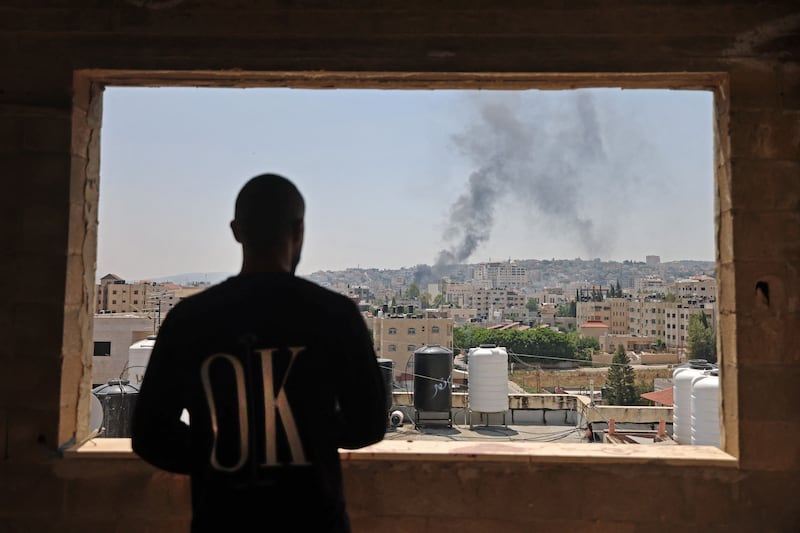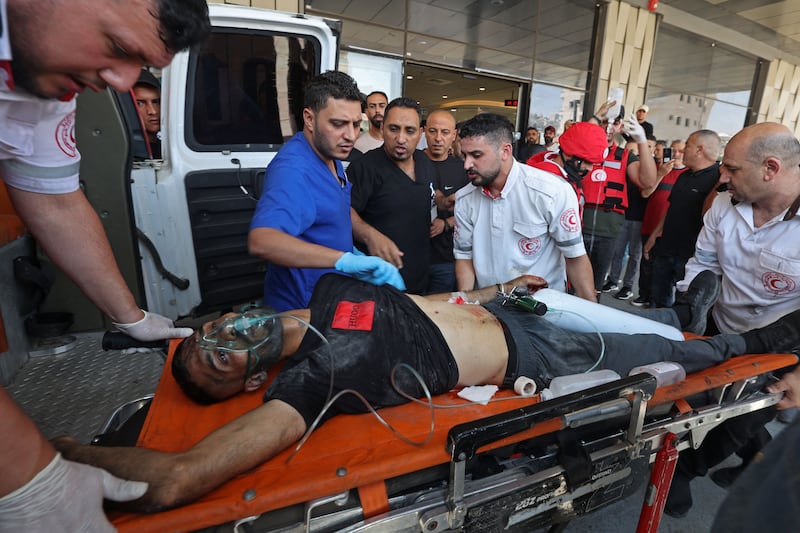Jenin has become the main West Bank stronghold of Palestinian resistance to Israel’s occupation. Monday’s Israeli army invasion of the Jenin refugee camp, the second within a month and largest since 2002, was expected by armed Palestinians, who prepared to defend their territory. It was also expected by civilians, who sheltered in their homes. Palestinians call Jenin the “martyrs’ capital,” the Israeli army has dubbed the camp a “hornets’ nest”.
Its defenders, the Jenin Brigades, formed in 2021 by fighters from Fatah, Hamas, and Islamic Jihad, have become a symbol of Palestinian unity at a time of bitter factional division.
The refugee camp, established by the UN in 1953, is embedded in Jenin city in the northern West Bank. Among the camp’s residents are refugees from Haifa, Mount Carmel, Jordan and Gaza. The UN has reported that the camp suffers one of the highest rates of unemployment and poverty among 19 West Bank camps.
Jenin took part in the first Palestinian intifada (1987-93): the “uprising of stones,” civil disobedience and popular protests. This ended with the Oslo Accords which established the Palestinian Authority with administrative responsibility for Palestinian enclaves in the Israeli-controlled West Bank.
READ MORE
Jenin was deeply involved in the second intifada (2000-2005). This was the intifada of gun and bomb, which erupted in 2000 when the Oslo-launched peace process failed to deliver an end to the Israeli occupation, settlement activity and the promise of a Palestinian state in the West Bank, East Jerusalem and Gaza. As Palestinian attacks on Israeli military targets and civilians mounted, Israel claimed Jenin was a resistance hub and attacked.

On April 3rd, 2002, after a spate of Palestinian suicide bombings, Israeli forces sealed off and stormed the camp. While most of the 13,000 residents fled, about 1,300 remained, while lightly armed fighters attempted to defend the camp against an all-out Israeli onslaught which continued until April 11th.
Although Palestinian spokesmen accused Israel of committing a massacre Israel did not allow international observers and humanitarian agencies to enter the camp until April 16th. After Israeli troops withdrew on April 18th, journalists reached the camp and reported on the death and devastation wreaked by 10 days of fighting.
While damage was inflicted on most of the camp, about 10 per cent was levelled by armoured Israeli bulldozers. This correspondent reported to The Irish Times that houses were gutted, the walls of some were spattered with blackened brain matter and dried blood, and mounds of earth and rubble lay where homes and shops once stood. The UN said 52 Palestinians and 23 Israeli soldiers were killed and 4,000 Palestinians were rendered homeless. Israeli raids continued after the UN rebuilt the camp.

On April 3rd, 2022, the 20th anniversary of the Battle of Jenin, Israeli forces mounted a raid, precipitating two hours of street fighting which killed one Palestinian and wounded 13. In response to that brief battle, Palestinian analyst and lawyer Diana Buttu told Al-Jazeera: “There are two places in Palestine that Israel has never been able to fully conquer – Jenin and Gaza.”
In May 2022, Al-Jazeera correspondent Shireen Abu Akleh was killed by Israeli army fire while covering another incursion.













